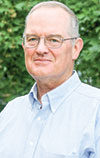Pasture is the most cost-effective feed for ruminant livestock. But at times, nutrients in pasture exceed the livestock’s needs. To measure pasture quality, we can sample and test pasture forage as we do hay. For on-farm pasture sampling, follow the grazing animals and hand-pluck forage samples that represent what the animals eat at the height the animals will graze.
Sample grasses, legumes and forbs (broad-leaf plants) they eat; avoid plants they do not eat. Air dry pasture samples prior to shipping to the lab so they don’t spoil en route. Use a testing service that measures fiber digestibility at 30 hours and uses it to calculate total digestible nutrients (TDN). When fiber digestion is used in calculating TDN, the value can be five percentage units higher than when fiber digestion is not used.
Grazing ruminants are adaptable. Given the opportunity, they graze different forages to balance their nutritional needs. For example, a herd of cattle given access to an alfalfa-smooth bromegrass paddock and a nearby cornfield grazed the pasture, then walked up an alley and over to the cornfield to graze. They did this in the morning and again in the afternoon, providing a better balance of crude protein (CP) and TDN than if they only grazed in one of the fields. When not given the option to balance their ration, cattle adapt at the expense of optimal performance.
There are three forage test fractions useful for troubleshooting problems. These are CP, neutral detergent fiber (NDF) and TDN. Pastures often contain CP in excess of livestock needs. The digestible fraction is used by the rumen bacteria and, ultimately, by the animal. Non-digestible CP leaves the body in the dung. Excess CP is converted to urea and leaves the body in the urine. Plant cell wall fiber is measured as NDF. At a given maturity, legumes and forbs are low in NDF compared to grasses. As plants get older, NDF content increases. Forage digestibility is reported as TDN. This a surrogate for digestible energy (DE) in the forage (1 pound TDN = 2.0 Mcal DE).
As a pasture grows and forage mass increases, its content of CP and TDN decreases and NDF increases. Animal nutrient intake is highly related to nutrient content in the forage. Intake of CP is about 20% greater, intake of TDN is about five percentage units greater, and intake of NDF is about five percentage units lower than the average analysis of clipped pre-grazing samples. This shows the ability of animals to selectively graze.
When is a pasture high-quality?
There is a range in pasture quality due to season and management (Table 1).
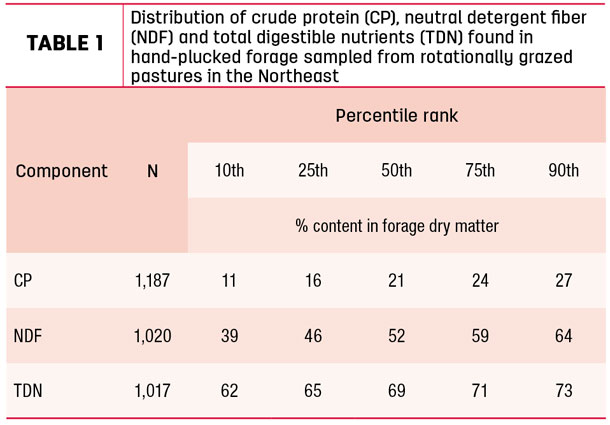
A pasture is high-quality if it meets or exceeds the needs of the grazing animal. Mature beef cows weighing 1,200 pounds need 21 to 25 pounds forage dry matter intake (DMI), containing 7% to 12% CP and 50% to 65% TDN, depending on pregnancy state and milk production. Growing cattle weighing 500 to 800 pounds gaining 1.5 to 2.5 pounds a day need 13 to 19 pounds forage DMI, containing 9% to 12% CP and 63% to 74% TDN. The CP requirement is low and narrow (7% to 12%).
Over 90% of pastures have more-than-adequate CP. Energy requirement is more variable. Cows at the low end (dry, mid-trimester gestation) have a low TDN requirement, and over 90% of pastures have adequate TDN. At the high end (superior-milking-ability cows), 50% of pastures have adequate TDN. For growing animals, most pastures are excess in CP, but TDN content often limits growth.
Low NDF measures mean excess quality
Lush spring and fall pasture can be low in NDF (Figure 1).
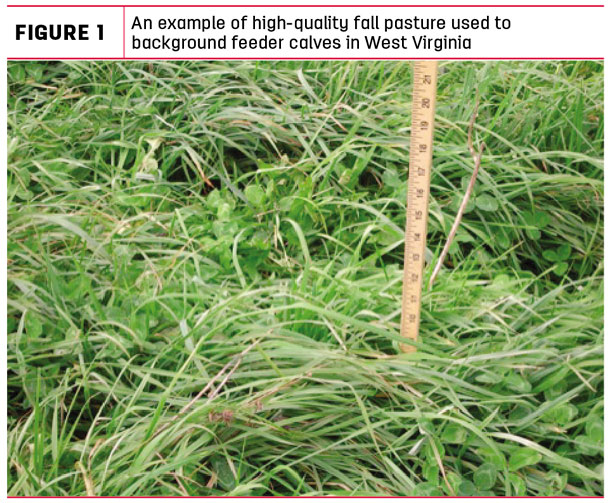
Rate of forage passage in the digestive tract will be high, and the forage will not be digested well. By providing dry hay, animals eat the fibrous hay, which reduces passage rate, allowing the rumen bacteria time to digest the highly digestible, low-NDF pasture. For a healthy rumen, a minimal ration NDF content should be above 35%. Even at this level, if the fiber is extremely digestible, the animals may crave more fiber.
When bunk-breaking backgrounding calves, low NDF can be a major problem. These animals are being fed a supplement on pasture to teach them to feed from a bunk. Supplements are low in effective fiber, so they reduce the ration’s effective NDF. For example: Backgrounding animals eating 2.5% of bodyweight are fed a commodity pellet at 1% of bodyweight, resulting in animals eating 1.5% bodyweight from pasture.
If the pasture has 50% NDF, the effective NDF intake will be 30% of total DMI (1.5 x 50 + 1.0 x 0 = 75 / 2.5 = 30). These animals need access to dry hay to maintain a healthy rumen (Figure 2).
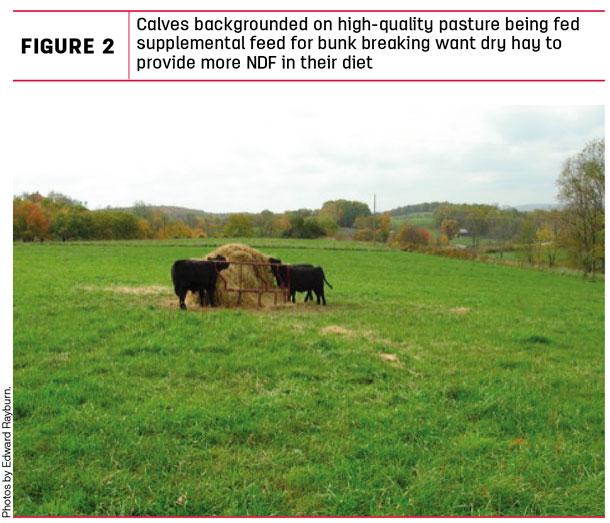
If not allowed dry hay, the animals may gain no weight. When first given dry hay, they may devour it for a day or two, then they will moderate hay intake and go about balancing their intake of pasture, supplement and hay.
Urea energy cost
Another issue on high-quality pasture is excess CP. This causes an energy loss to the animal as it is converted to urea for excretion in the urine. This results in actual gains being lower than expected (Figure 3).
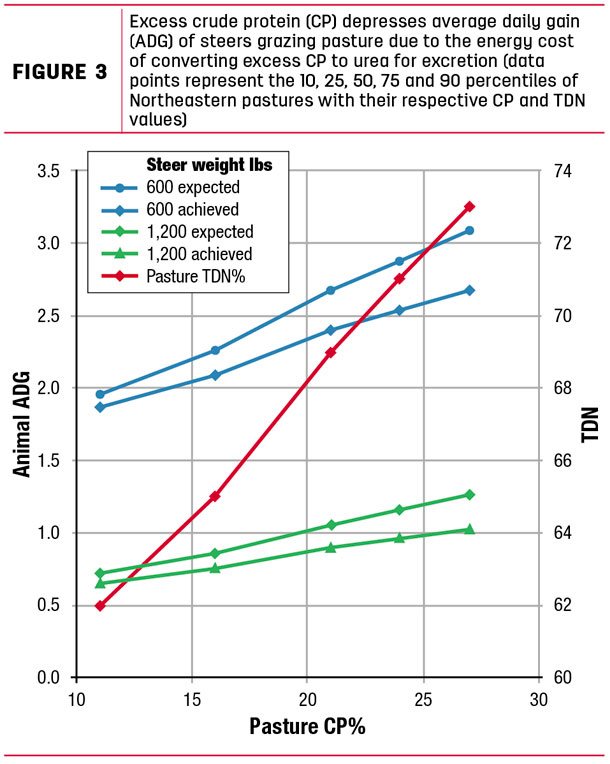
Urea energy cost can be reduced by encouraging the growth of forbs (plantain, dandelion, chicory) that are relatively low in CP, not using nitrogen fertilizer on pasture, growing pasture to a more mature state or limit-feeding a high-carbohydrate supplement like shell corn or barley.
When limit-feeding ground shell corn (1% of bodyweight per day or less) to backgrounding calves on high-CP pasture, 3 pounds of corn resulted in 1 pound of additional gain.
Pastures low in NDF or high in CP may be too high in quality. Forage testing can help determine actual pasture quality. Providing dry hay to animals on spring and fall pastures reduces the negative effects of low NDF. High-CP pastures can be managed by changes in plant species, grazing management and proper supplementation when practical and economically feasible. ![]()

-
Ed Rayburn
- Forage Agronomist
- West Virginia University
- Email Ed Rayburn
